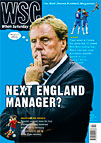 When struggling to secure promotion to the Football League, Wigan attempted to join the Scottish pyramid. Owen Amos explains more
When struggling to secure promotion to the Football League, Wigan attempted to join the Scottish pyramid. Owen Amos explains more
Wins may be scarce, but the Premier League fixture list offers consolation for Wigan Athletic: Manchester United one week, Liverpool the next. But if things had gone to plan in 1972, it could have been quite different: more like Stranraer one week, Stenhousemuir the next.
In the 1970s, Wigan played in the Northern Premier League (NPL). The decade before, they were in the Cheshire County League, along with the likes of Mossley, Runcorn and Wrexham reserves. The NPL and the Southern League were the highest levels of English non-League football, but there was no automatic promotion to the Football League. If clubs wanted in, they had to stand for election against the four teams that finished lowest in Division Four and the other non-League clubs that fancied promotion. In that system, promotion was rare. From 1951 to 1977, only six clubs were admitted. Wigan applied every year and failed every time. In total, they stood for election 34 times.
The club’s experience in 1971 made them want to leave English football. Wigan had fancied their chances for promotion. They were NPL champions in 1970-71 and reached the third round of that season’s FA Cup, losing 1-0 at Manchester City in front of more than 46,000 fans (appearing on Match of the Day in the process). At home, they had a crowd of 17,000 for the visit of Peterborough in the FA Cup second round, and 8,000 for Stafford Rangers in the league on Boxing Day. In short, they were on the up.
There was also a feeling that a northern club were “due” election, with Cambridge Utd, Oxford Utd and Peterborough Utd all replacing northern sides since 1960. But Wigan’s chairman, Ken Cowap, made a mistake. Before the vote at London’s Café Royal, he gave every chairman a £2 Parker pen. The pens, it was felt, were bribes. The four Football League clubs – Barrow, Hartlepool, Lincoln and Newport – were comfortably re-elected. Wigan won just 14 votes – four fewer than the year before and eight fewer than Southern League
Hereford. Cowap inevitably became known as Ken the Pen.
With their noses out of joint, Wigan applied to join the Scottish Second Division in 1972. It is said that the idea began when Springfield Park, then Wigan’s home ground, hosted an amateur game between England and Scotland that year, with Scottish officials impressed by the facilities. Wigan had a number of players from Scotland and had played several recent friendlies against Scottish clubs.
The problem was simple. Wigan is more than 100 miles away from Scotland. A match at Brechin, who were in the Second Division, would require a 600-mile round trip. The Scottish League was hardly welcoming. Between 1931 and 1974, only one club – Clydebank in 1966 – were admitted. Wigan’s chances were slim and their bid was rejected. Another club from the NPL, South Shields, were turned down at the same time. South Shields, then known as Gateshead United, tried again two years later, but lost out to Ferranti Thistle, who became Meadowbank Thistle before relocating to Livingston.
Paul Rowley, who covers Wigan for BBC Radio Manchester, was 17 in 1972. He believes the club chanced their arm in Scotland for a number of reasons. “My own feeling, almost 40 years on, is the idea was a mix of pique, having been constantly been rejected by the Football League, public relations, as it got a lot of press, and a large dose of desperation, exasperation and frustration. But maybe there was a logic to it. Berwick Rangers had set a precedent of an English club playing in Scotland and Wigan already travelled long distances to Gainsborough Trinity, South Shields and Boston United. They also thought they would have the biggest gates in the Scottish Second Division, and could even win the league and rise up the pyramid.”
In the end, Wigan stayed in the NPL. Six years after being turned down by Scotland, they were the last team elected to the Football League, replacing Southport. The Conference – then known as the Alliance Premier League – began in 1979 and automatic promotion to the Football League started in 1987. Had Wigan been elected to the Scottish League, they may have had the DW Stadium, big matches against Rangers and Celtic, even European nights. On the other hand, they may have lived out their days playing Stranraer at Springfield Park – counting down the days until the derby, 140 miles north at Queen of the South.
From WSC 300 February 2012